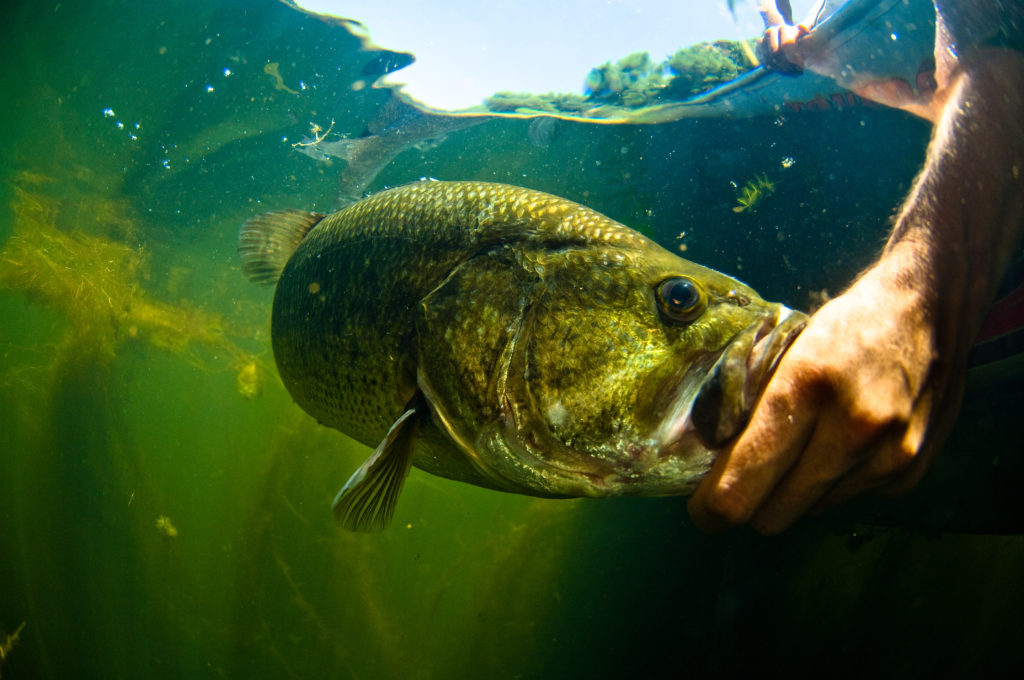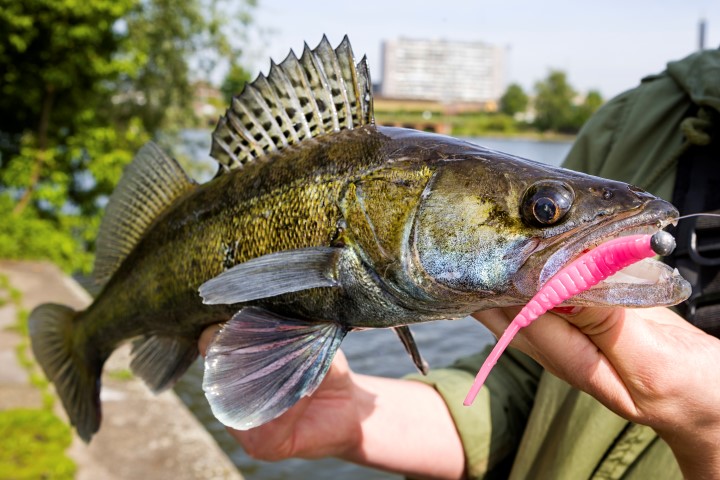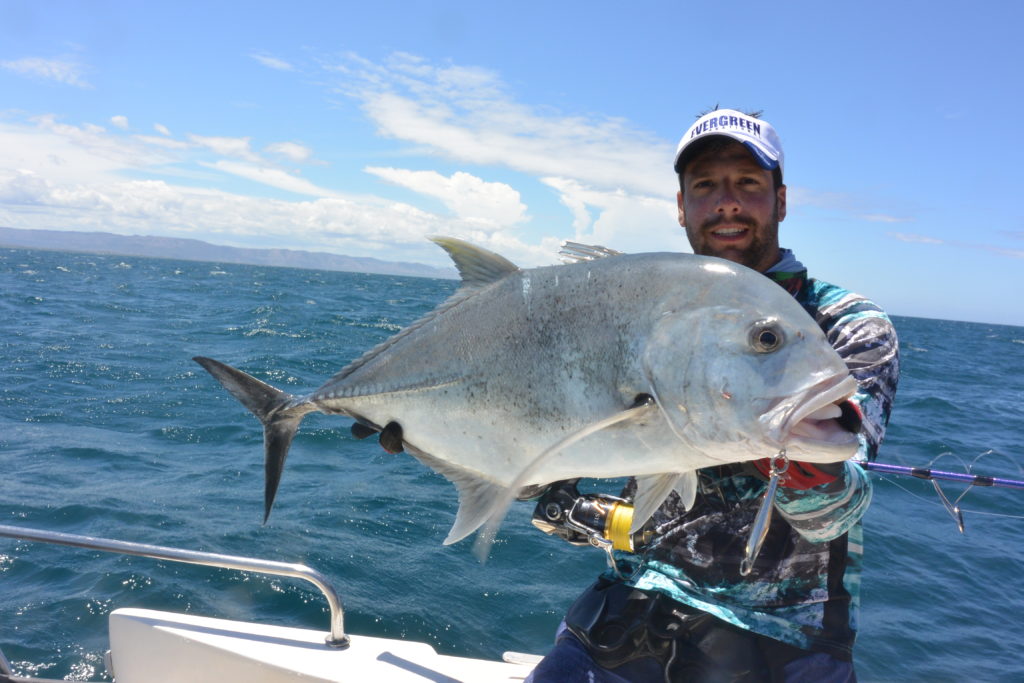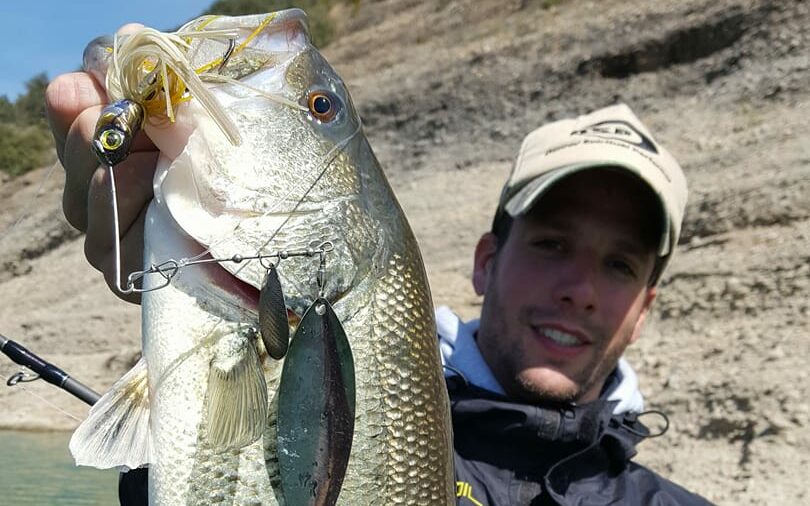
The spinnerbait fishing is one of the most versatile and effective lure fishing techniques available for all types of predator. It is becoming increasingly popular due to the the countless possibilities it offers for fishing. Indeed, the spinnerbait is an all-terrain lureIt's easy to use in any conditions and for any angler. If you want to know how to fish with a spinnerbait, what equipment to use and under what conditions, here's everything you need to know about spinnerbait fishing.
What is a spinnerbait?
A spinnerbait is a metal lure made up of several sections:
- A V-shaped frame
- One or more metal vanes mounted on a bracket on the upper arm
- A lower arm fitted with a lead head of varying weight
- A silicone skirt concealing a single hook
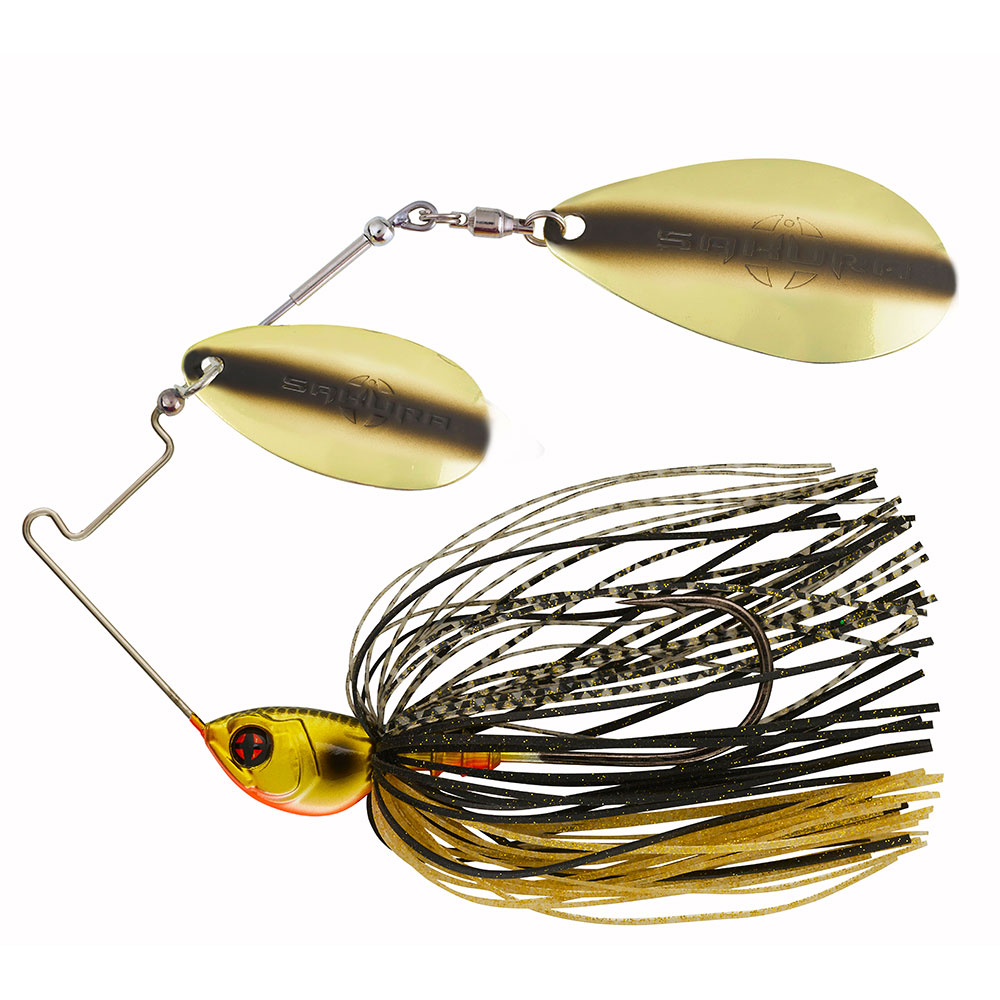
When fishing with a spinnerbait, the combination of these elements creates a multitude of distinct signals with their own purpose. When the paddle rotates, it produces visual flashes and vibrations that attract carnivores from afar. The rotation of the vanes is transmitted to the whole frame, right down to the lower part which consists of the lead head and the silicone skirt.
The latter produces more discreet vibrations that allows predators to target their attack on the hook. The spinnerbait skirts are designed to produce a different type of vibration, allowing the predator to target the spinnerbait hook more precisely. They are generally sillicone-based and historically made of rubber.
The frame protects the hook, which always points inwards. So when you're spinnerbait fishing, you'll see just how much the spinnerbait can do. passes easily through obstacles: sea grass, rocks, submerged trees.
The spinnerbait is therefore a very complete and all-purpose lure, allowing any angler to get the best out of it in a wide range of circumstances.
Paddles: an essential part of spinnerbait fishing
There are three main types of spinnerbait blades with a different kind of action.
Firstly, the colorado type pallets are pallets with the distinctive feature of being very rounded. This design displaces a lot of water and therefore more vibrations. This feature also causes the spinnerbait to rise towards the surface when retrieved. For this reason, we prefer this type of paddle for fishing near the surface or when the water is dirty. This makes it easier for predators to locate your spinnerbait.
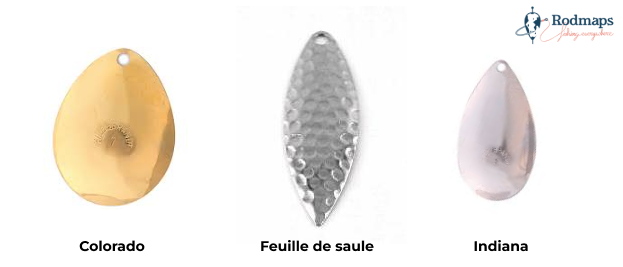
Secondly, we have the willow leaf pallets. They have a slimmer, longer profile than the colorado type. This means they spin faster, producing more flash but less vibration. Their design also means that they can be fished deeper. This type of blade works well in clear water and on deeper layers of water. It imitates the profile of a roach or bleak perfectly and is therefore very effective when fishing in fishbowls.
Finally, we have the pallets known as Indiana. This type of pallet is a hybrid between colorado and willow leaf. The thinner front end allows the paddle to turn faster. However, the design means that the spinnerbait will work in deeper water than a Colorado paddle. The rounded rear end produces more noise and vibration than a willow leaf paddle. In our opinion, this type of pallet is more versatile and can be used in all kinds of conditions.
Which paddle should I choose for spinnerbait fishing?
Here's a simple summary of what we can do with paddles when spinnerbait fishing:
- Muddy water = single or double colorado.
- Low light levels = double Colorado or Colorado / Indiana combination.
- Tinted water= Colorado/Indiana, Willow leaf/Indiana or double Indiana.
- Clear water = Colorado/willow leaf, Indiana/willow leaf. Double or single willow leaf.
- Around the shoals of fish= Single or double willow leaf
How do you choose the right spinnerbait?
Basically 7 things to consider when choosing a spinnerbait. The behaviour of a spinnerbait is linked to these factors:
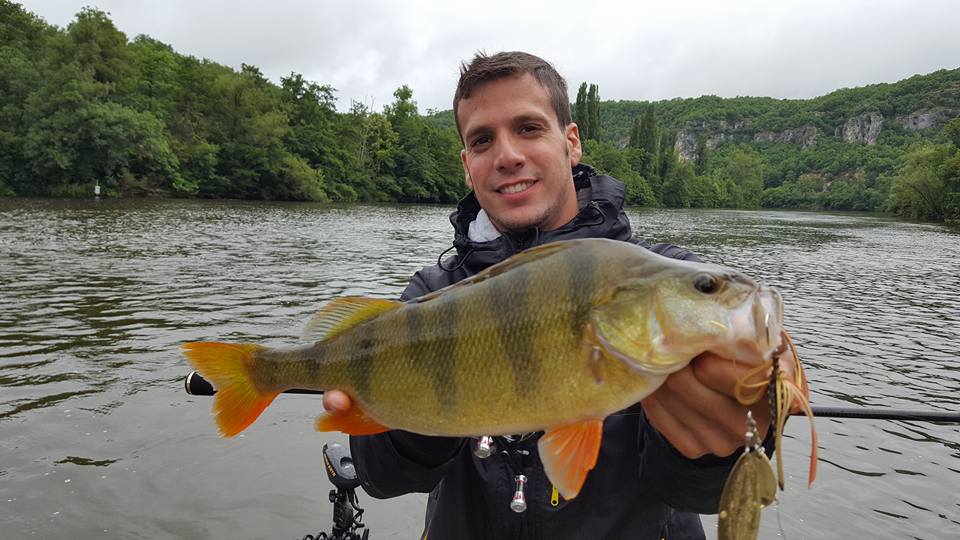
- The number of pallets
- The shape of the pallets
- The colour of palettes
- Combining pallets
- The shape and weight of the lead head
- The frame
- The colour of the skirt
We have already detailed our choice of shape, number and combination of paddles. Now let's look at the shape and weight of the lead head.
Choosing the right weight, size and shape of lead head is essential when spinnerbait fishing. A simple rule we can give you is as follows. Use a lighter spinnerbait with Colorado paddles in shallow water and a heavier spinnerbait with Willow paddles in deep water.
As far as the shape of the lead head is concerned, assume that a triangle-shaped head works best in fast flowing water or when recovering quickly. When fishing with a spinnerbait, a A rounder or flatter lead head for slower fishing in deeper water.
As for the weight of the lead head, the standard sizes we use are as follows:
- 3/8 oz for shallow water fishing (0 to 1m)
- 1/2 oz for fishing in intermediate areas (1 to 2m)
- 1 oz for fishing in deeper areas (+2m)
How to fish with a spinnerbait
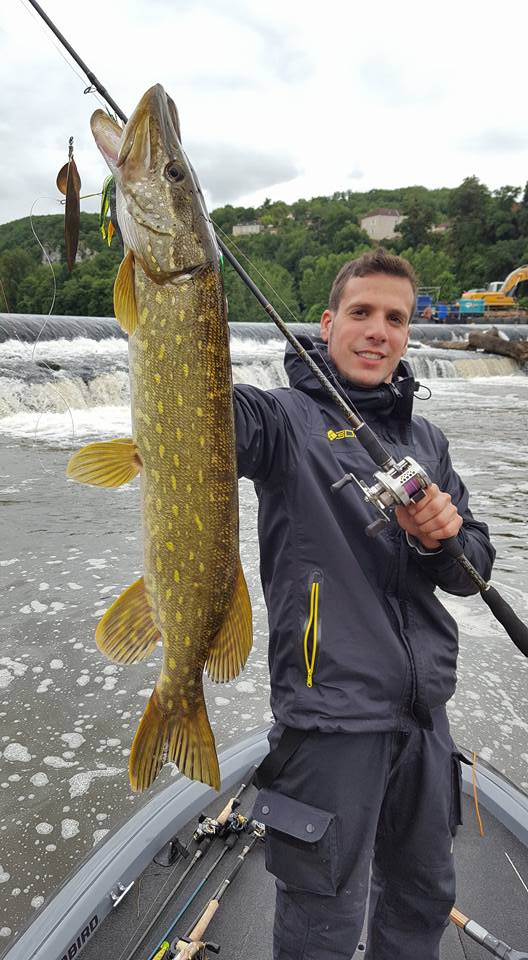
Spinnerbait fishing is a very simple technique for any angler to master.. The basic principle is to cast your spinnerbait and reel it in. The lure does the rest. Spinnerbait fishing can be done in all types of water. From flats to the deepest areas, in open water or near the edges, the spinnerbait is an all-terrain lure that will adapt to any environment.
However, there are a number of subtleties that will help you get the most out of your spinnerbait.
Here are a few useful tips on how to fish with a spinnerbait and get the most out of your lure.
Adapt your recovery to the clarity of the water
Water clarity is an essential element to take into account when spinnerbait fishing. Spinnerbaits produce so many signals that if used incorrectly they can arouse the suspicion of predators.
That's why we advise you to get your spinnerbait moving quickly in good weather and clear water. This involves provoke reflex attacks and not give the predator time to think in crystal clear conditions. On the other hand, on cloudy days and in murky water, slow down your retrieve to give the fish time to target your lure.
We also advise you to deliberately vary the retrieve speed on the same cast in order to vary the vibrations and apply erratic movements to your lure.
Don't be afraid to overcome obstacles
When spinnerbait fishing, don't be afraid to use the cover. Your lure and its design are particularly well suited to this. A spinnerbait will allow you to go after fish where other lures won't go. Use it when fishing near vegetation, submerged wood or any other type of obstacle. What's more, when your spinnerbait hits these obstacles, it will cause erratic movements and very often attacks.
When is the best time to fish with a spinnerbait?
The most effective times for The best times for spinnerbait fishing in our opinion are early spring, summer and mid-autumn. These periods coincide with the environmental transition phases for all carnivores. They are generally more active during these periods and are found near the same spots.
- Close to borders in early spring after the cool period.
- In grassy areas in summer to protect itself from the heat while finding areas to hunt.
- In congested areas in mid-autumn in preparation for the cold season.

Because of their design, spinnerbaits are generally the best choice for this type of occasion.
What equipment should I use when spinnerbait fishing?
We generally use rods with a moderate fast action to absorb the vibrations of the spinnerbait. In terms of length, we prefer 180cm rods for shorter, more accurate casts around trees and 210cm or longer rods for more open areas.
As far as the reel is concerned, the optimum and most versatile ratio in our opinion is 6.4:1. Higher ratios, such as 7.1, will allow you to practice the faster fishing described above.
Finally, when it comes to the choice of line, we recommend nylon. Nylon is very stretchy and will absorb the vibrations of your spinnerbait. So you won't get as tired after dozens of hours of casting and reeling.
Here are four highly versatile spinnerbaits that we recommend you keep in your tackle box:
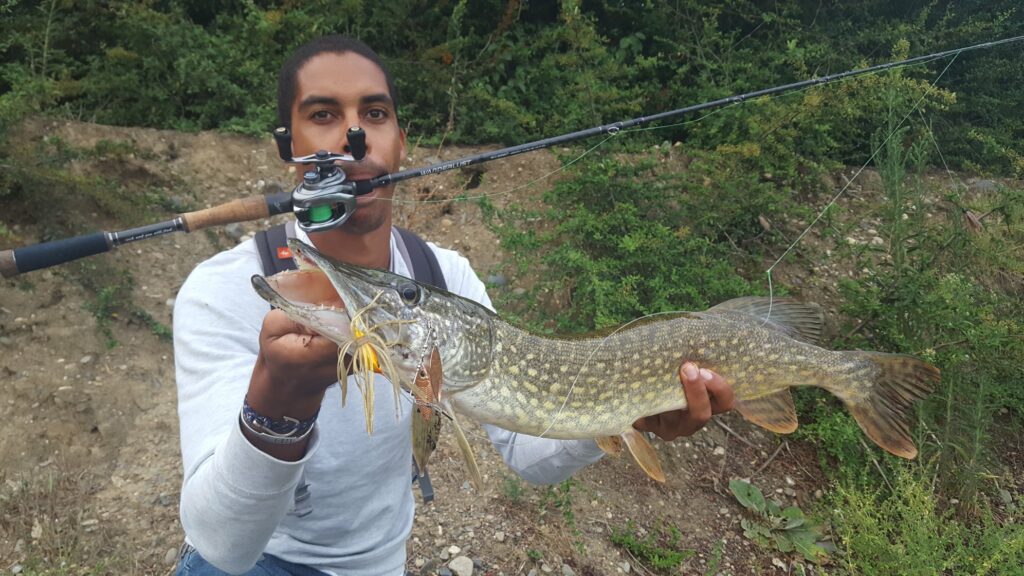
Useful links to complete this article on spinnerbait fishing:
Pike spinnerbait: 5 essential spinnerbaits for pike fishing
Pike crankbait: 5 essential pike crankbaits
Pike jerkbait: our selection of 5 pike jerkbaits
Pike lures: 10 pike lures to have in your box of lures
The 10 best types of black bass lures

